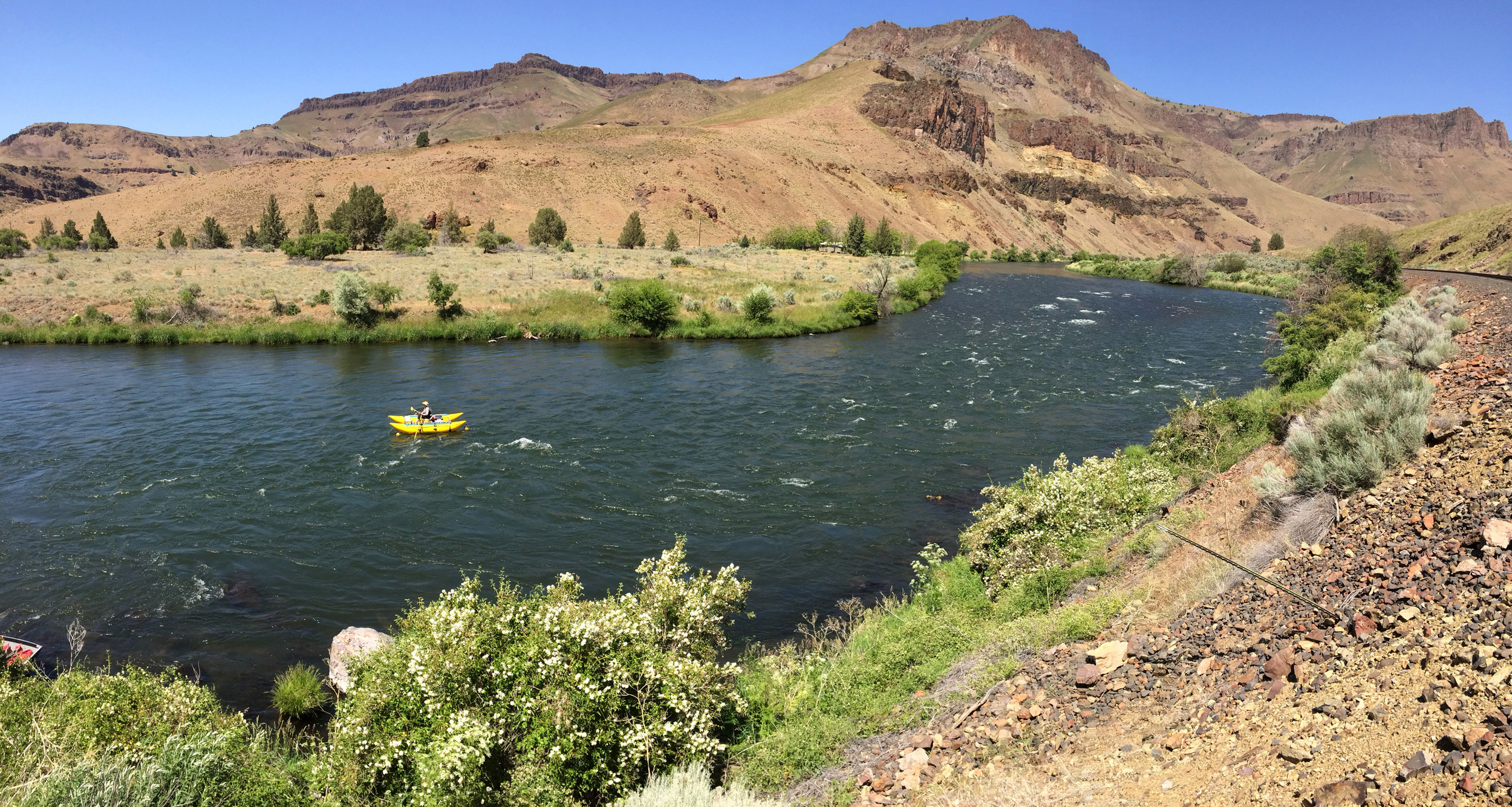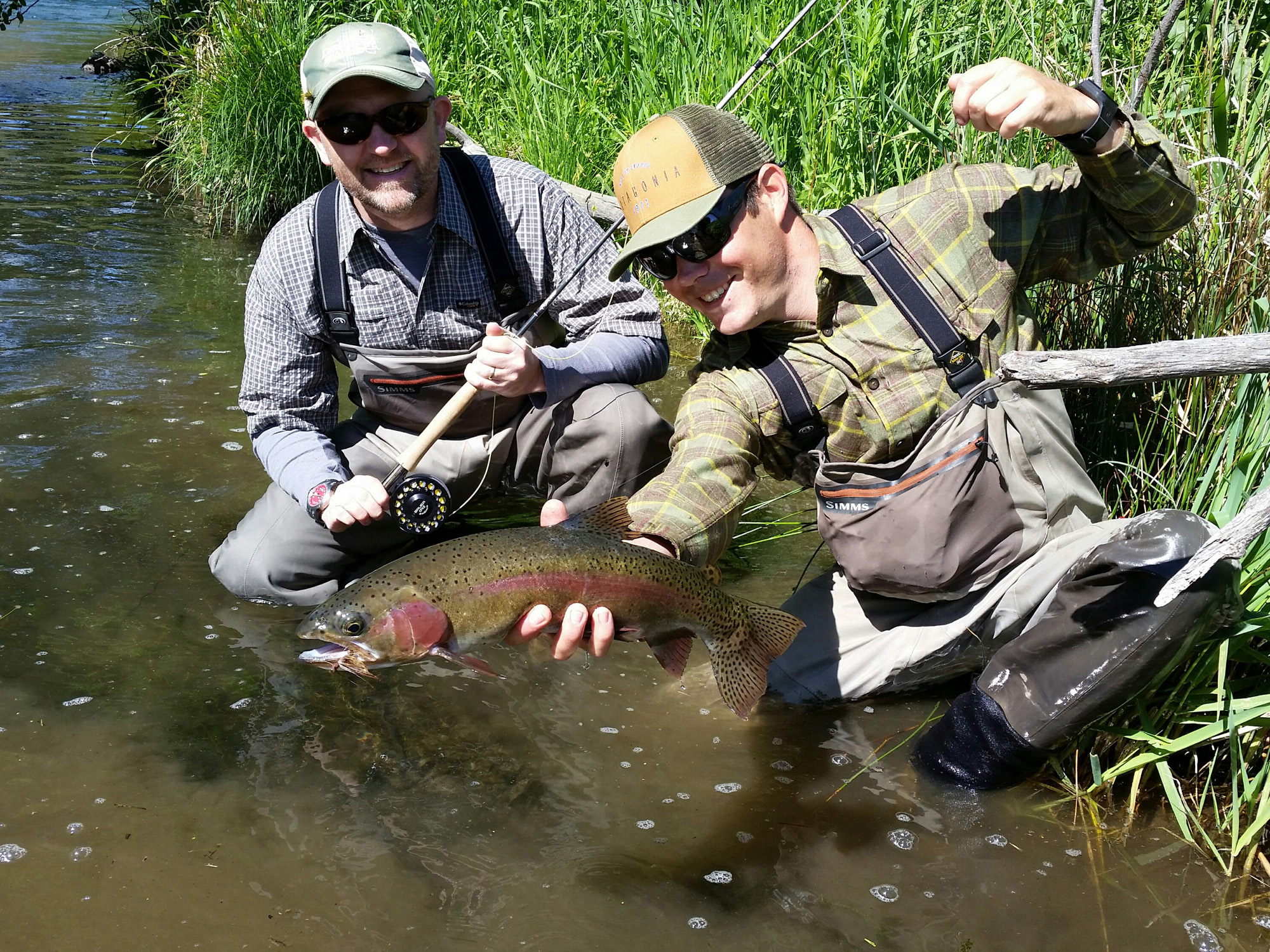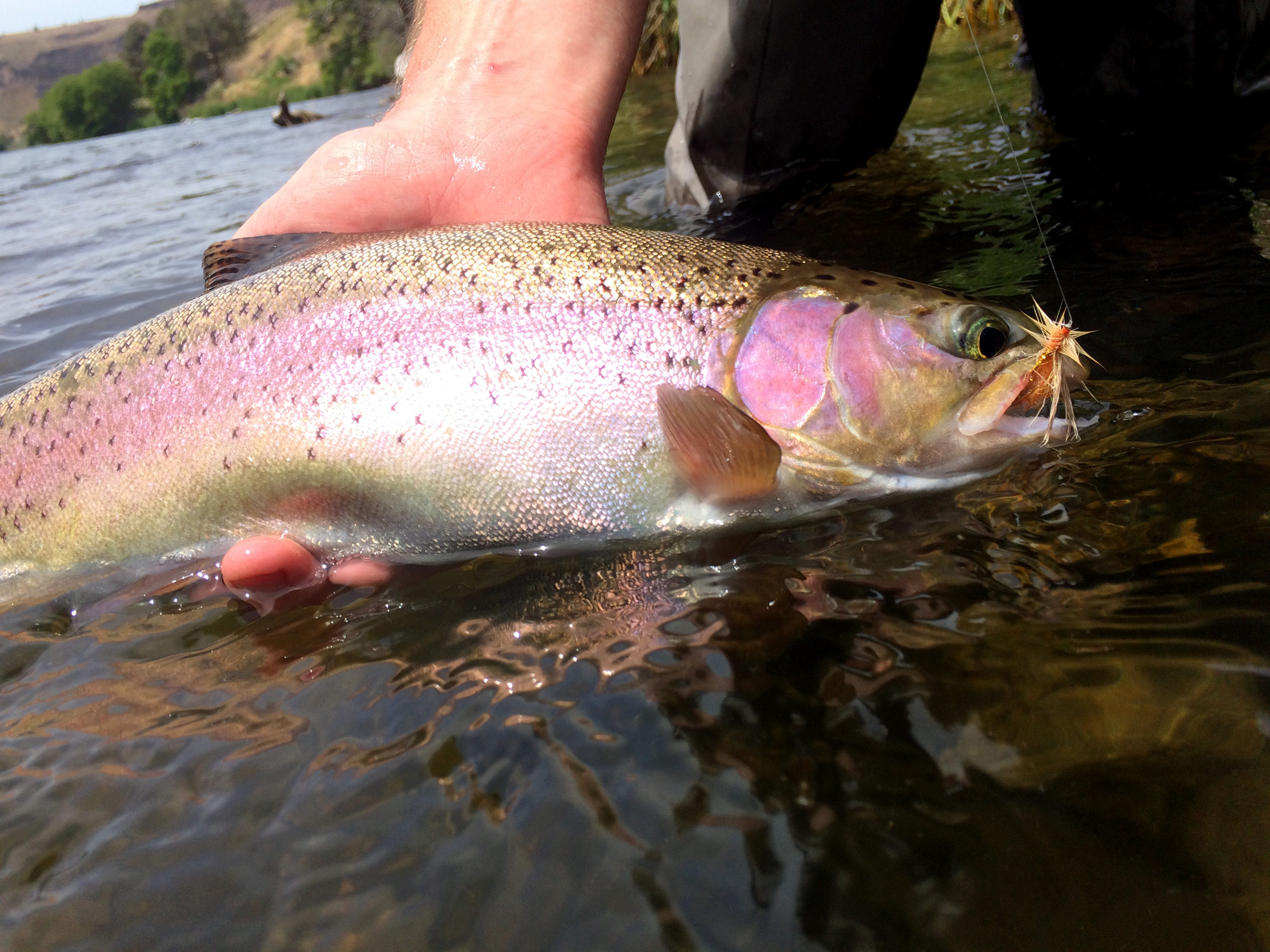Riseforms
The stonefly hatch is almost over on the Lower Deschutes River... lots of big bugs still from Warm Springs to Trout Creek, but if you plan on fishing the other 90 miles of river then expect to be casting small flies. Our favorite way to fish post salmonfly is hunting individual trout, casting only to sighted fish. You may catch fewer fish this way than you would standing in a riffle lobbing an indicator. The average size, however, will be much larger. And the experience more memorable. Nothing gets my blood pumping like stalking a big wild rising trout.
Caddis have been hatching in big numbers since the warmer weather set in. PMD's and PED spinners have been hot too. I typically carry some caddis patterns like the E/C caddis or X-caddis, some parachute patterns like the purple para wulff or purple haze, some PMD sparkle duns, and a handful of Silvey's prime time pupae and edible emerger for the extra picky trout.
When the trout are eating size 16 and smaller it can be tricky to see what they're taking. Especially when they are sipping spent insects that lay flat, or when they're hammering emergers as they reach the surface. The other day we were casting to a trout that was feeding voraciously on top. The trout wanted nothing to do with our fly, but kept on rising. Then it dawned on me. Usually you don't have to go Mike Lawson on the Deschutes, but I thought back to my early trout fishing education on the Metolius, one of the more technical streams in Oregon. The rise was splashy and bubbly, but the nose and head never broke the surface. It was crushing emergers! I tied on a Silvey's prime time pupae and my sport hooked up on the first cast. The fish broke off quickly for the record! But it got me thinking about the lost art of identifying riseforms.
Thanks for reading,
Chris











